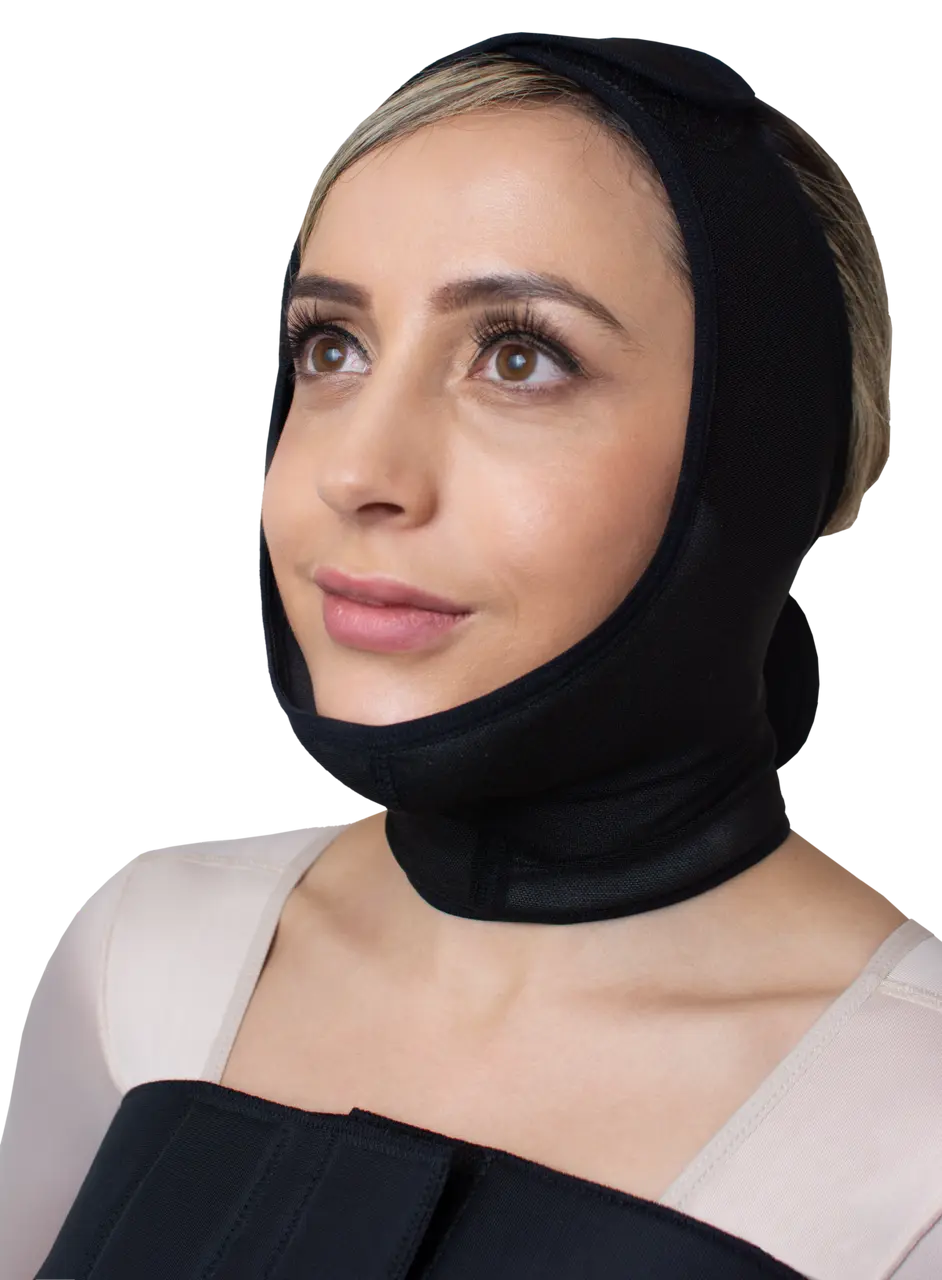INTRODUCTION TO FACE COMPRESSION GARMENT
Choosing the right face compression garment can significantly impact your comfort, recovery, and overall satisfaction with the procedure. Whether you are looking for a garment post-surgery or for cosmetic purposes, understanding the key features and factors to consider is essential. This guide will help you navigate through your options to make an informed decision.

Understanding Face Compression Garments
- A face compression garment is designed to apply pressure to the face after cosmetic procedures or surgeries. This pressure helps reduce swelling and supports healing. Understanding their purpose and design is crucial for effective use.
- Typically made from elastic materials, these garments fit snugly against the skin to promote blood circulation. They play a vital role not only in enhancing recovery but also in achieving better aesthetic results. Using the right garment can facilitate a smoother transition after your procedure. It’s essential to remember that the benefits of these garments are maximized when they are used correctly.
Finding the appropriate application period for wearing the garment is key. Post-surgery, healthcare providers often recommend wearing the garment continuously for a certain duration, gradually transitioning to part-time usage. This regimen varies by individual and the type of procedure undergone.
Material Matters: Fabric Choices for Comfort and Effectiveness
The material of the garment directly affects comfort and breathability. Common fabrics include spandex, nylon, and cotton blends. Knowing which fabric is best for your skin type can enhance your experience. High-quality materials offer more flexibility and stretch, allowing you to wear the garment for longer periods without discomfort.
Soft-touch fabrics that wick moisture away are particularly beneficial, especially if you’re wearing the garment for extended durations. You’ll want to avoid any materials that may cause irritation. Additionally, consider the garment’s thickness; a thinner fabric may be more breathable while thicker materials often provide better compression.
A blend of materials may also facilitate effective compression while ensuring comfort. Look for garments labeled as hypoallergenic if you have sensitive skin. As you evaluate options, it’s critical to balance multiple factors: comfort, support, and the specific requirements of your recovery.
Finding the Right Fit: Size and Adjustability
A well-fitting garment is essential. Look for options that offer adjustable straps or sizing charts, ensuring the compression is effective without being overly restrictive. An improperly fitting garment can exacerbate discomfort and negate the benefits of using one.
When selecting size, pay attention to your measurements and the size guide provided by the manufacturer. Some brands may vary, so double-checking your choices is crucial. Additionally, consider how the garment will fit throughout your recovery process; swelling may increase or decrease, necessitating adjustments to your size. Opting for highly adjustable garments can provide extra convenience.
Finally, remember to read customer reviews regarding fit and comfort. Potential users often share invaluable insights into sizing and whether the product meets expectations. Engaging with these reviews can provide guidance on making the right decision.
Compression Levels: Understanding Different Needs
Compression levels vary from light to firm, tailored to specific needs such as post-operative care versus cosmetic use. Understanding your specific needs can guide you in selecting the appropriate level. Light compression might suffice for mild cosmetic procedures, while more intensive procedures often require firmer compression to aid in recovery.
When choosing your garment, consider consulting with your surgeon or medical provider to understand recommended compression levels based on your procedure. They can often provide tailored instructions based on personal medical history and recovery goals, ensuring you maximize the benefits of compression therapy.
Moreover, be aware that your needs may evolve throughout your recovery journey. Starting with stronger compression and then transitioning to lighter support can be an effective strategy. Therefore, select garments that support this flexibility, accommodating your body’s natural healing process.
Consulting Professionals: Seeking Expert Advice
Consultation with your surgeon or dermatologist can provide tailored recommendations. Their insights can guide you on the best materials and compression levels suitable for your recovery. This is essential to ensure safety and efficacy, helping you choose wisely among various brands and models available.
Many practitioners have firsthand experience with particular brands and styles, which can save you a lot of time and potential frustration. They can also clarify any specific requirements based on your individual anatomy post-surgery, ensuring you achieve the best possible outcomes.
Don’t hesitate to ask questions regarding any aspect of face compression garments during your consultation. Understanding the ‘why’ behind their recommendations will empower you to make confident choices, reinforcing the focus on your recovery.
Caring for Your Garment: Maintenance Tips
Proper maintenance helps your garment last longer and stay effective.
✔️ Wash gently: Use cold water and a delicate cycle
✔️ Air dry whenever possible to prevent fabric damage
✔️ Rotate between two garments for extended wear
✔️ Check for signs of wear and replace when necessary
Since compression garments lose elasticity over time, following these steps will help maintain their effectiveness.
Final Thoughts on Choosing a Face Compression Garment
In conclusion, selecting the right face compression garment requires careful consideration of material, fit, purpose, and expert recommendations. By paying attention to these details, you can ensure your garment not only provides the required compression but also offers comfort and aids in your recovery process.
Looking for a high-quality face compression garment? Check Dr Shape